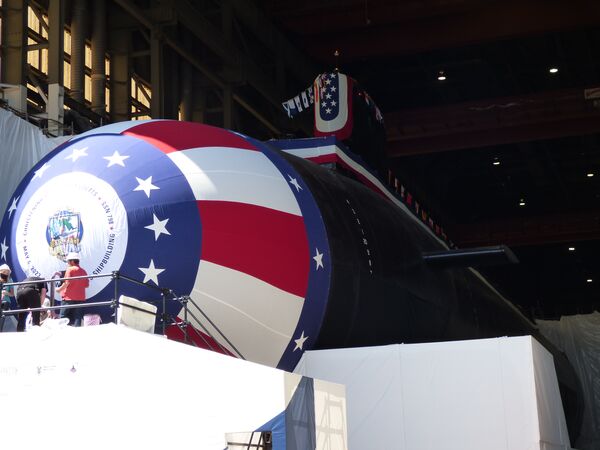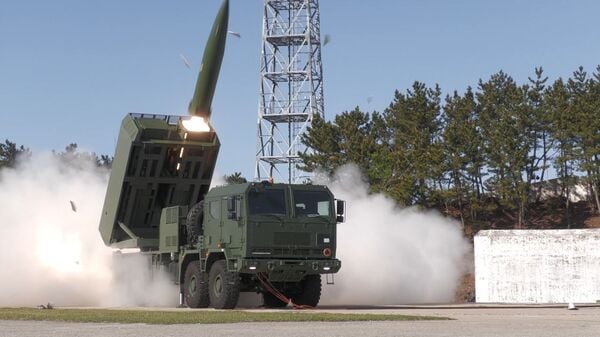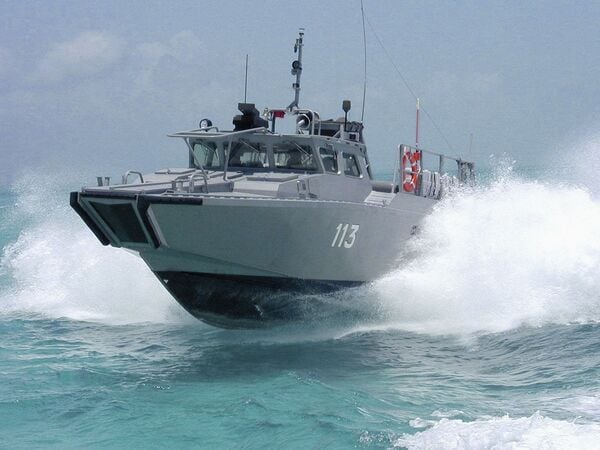- About
- Intara
- Capabilities
- Advisory
- Resources
- News
- Store
Ukraine conflict: Invasion will boost US defence budget, lawmaker says
04 March 2022
by Marc Selinger


The US Capitol building in Washington, DC. (Getty Images)
Russia's invasion of Ukraine will spur the US to spend more on defence than previously thought, according to the chairman of the US House Armed Services Committee.
Although Representative Adam Smith, a Washington state Democrat, has not decided what the fiscal year (FY) 2023 defence budget top line should be, he believes the US Department of Defense (DoD), “without question”, will need more resources to help protect US allies in Eastern Europe.
“The Russian invasion of Ukraine fundamentally altered what our national security posture and what our defence posture needs to be,” Smith told the Washington, DC-based American Enterprise Institute (AEI) on 3 March. “It made it more complicated and it made it more expensive,” he added.
Smith said that any FY 2023 increase should be accompanied by steps to make the overly bureaucratic DoD more efficient to ensure the money it receives is well-spent. The Biden administration is expected to send its FY 2023 budget request to Congress as early as this month.
The FY 2022 National Defense Authorization Act, which Smith's committee helped write, supports a total of USD777.7 billion in defence funding, including USD740 billion for the DoD and USD27.8 billion for national security programmes at the Department of Energy.
Smith's comments came three days after Senate Minority Leader Mitch McConnell, a Kentucky Republican, urged the Democratic administration to include at least a 5% increase for defence above inflation in its FY 2023 budget request.
While Congress awaits the FY 2023 request, it is considering the administration's new USD10 billion FY 2022 supplemental funding request for Ukraine-related security, humanitarian, and economic assistance.
The 56-page supplemental request, which the administration released on 3 March, contains USD4.8 billion for the DoD to support troop deployments in Eastern Europe and replenish stocks of military equipment provided to Ukraine. The deployment funds would cover various efforts, including cyber security, intelligence analysis, transportation of equipment and personnel, and weapon system sustainment and upgrades.
The proposed supplemental request also includes USD500 million for the Department of State to provide military assistance to Ukraine and other countries affected by Russia's invasion, and USD21 million for the Department of Commerce to bolster export controls for dual-use technology.
The administration has committed USD1 billion in security assistance to Ukraine during the past year.
Congress continues to question US Navy decision to cut Virginia-class submarine
02 May 2024
by Michael Fabey


US lawmakers are criticising the US Navy's decision to cut a Virginia-class submarine, similar to the one shown here, from the recent budget request. (Janes/Michael Fabey)
US lawmakers are continuing to question the US Navy (USN) fiscal year (FY) 2025 budget request that cuts a Virginia-class attack submarine (SSN) from its funding proposal.
Initially, the USN had planned for two Virginias for the fiscal year, but now the service is asking for only a single submarine in the FY 2025 request submitted earlier in 2024.
In recent hearings on the budget US lawmakers have criticised the Virginia submarine cut.
Washington State Congressman Adam Smith, the ranking member of the House Armed Services Committee (HASC), continued the criticism on 1 May during a HASC hearing on the USN FY 2025 budget request.
Poland orders second batch of Chunmoo MRLs
29 April 2024
by Nicholas Fiorenza


The AA signed a second executive contract with Hanwha on 25 April for 72 K239 Chunmoo MRLs (pictured), several thousands of missiles, and technology transfer. (Hanwha Aerospace)
The Polish Armaments Agency (AA) signed a second executive contract with Hanwha Aerospace for 72 K239 Chunmoo multiple rocket launchers (MRLs) on 25 April, the Polish Ministry of National Defence (MND) and the South Korean company announced the same day. The USD1.6 billion contract also covers the delivery of several thousands of missiles with ranges of 80–290 km, including the 600 mm CTM290, and technology transfer.
The Polish MND said on its website that it expected the contract to have a significant impact on the development of the Polish defence industry, with the technologies acquired allowing the establishment of a capability to carry out repairs and modernisation, as well as produce spare parts for the MRLs and launch pods for 122 mm rockets produced by MESKO, part of Polska Grupa Zbrojeniowa (PGZ).
Saab's Skapa initiative aims to speed technology into customers' hands
24 April 2024
by Jeremiah Cushman


Saab has developed an autonomy package for its CB 90 fast boat and demonstrated its ability to navigate the Swedish coast. Pictured above is a CB 90 that was delivered to Malaysia. (Dockstavarvet)
Saab has established a new business function to revamp how it develops and delivers products to meet changing customer requirements. Skapa, a Swedish word that means “to create, to make, or to shape”, will focus on solving customer and stakeholder problems at speed, Erik Smith, president and CEO of Saab in the United States, told reporters on 23 April. “Skapa will accelerate the development and deployment of cutting-edge solutions to our warfighters” at pace, he said.
Russia's invasion of Ukraine will spur the US to spend more on defence than previously thought, acco...
Latest Podcasts
Using OSINT to support law enforcement
Ritu Gill, Intelligence Analyst, joins Harry and Sean to discuss the practical use of OSINT to support law enforcement. Ritu discusses it’s use in supporting risk assessments and classified or closed sources of intelligence. She also discusses t...
Listen nowJanes Case Studies
Using Janes Intara to build a common intelligence picture: Russian build up on the Ukrainian border
View Case StudyNews Categories
 Defence Details
Defence Details